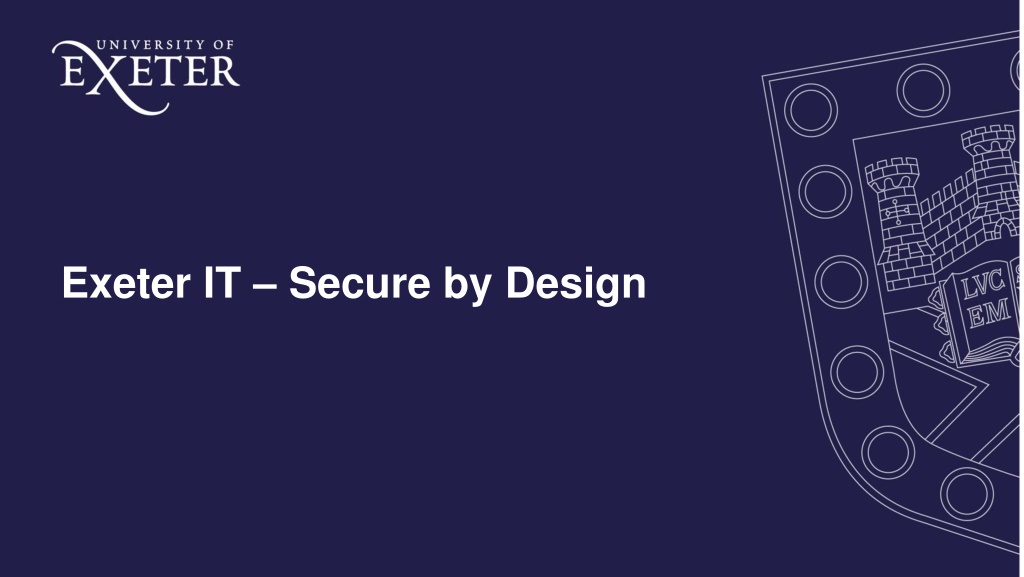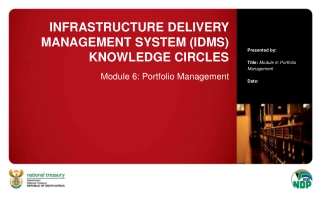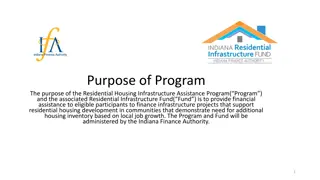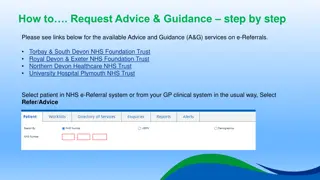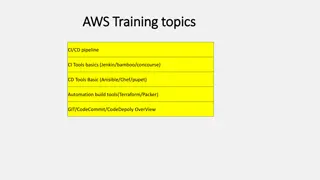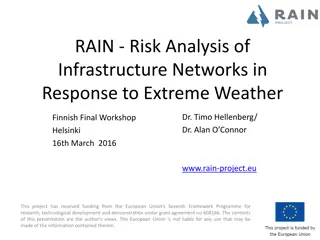Securing IT Infrastructure at Exeter University
Exeter IT Secure by Design is a comprehensive approach to IT security at the University, focusing on developing robust security measures, integrating security into services by design, ensuring compliance, and managing risks effectively. The secure-by-design process helps in identifying security objectives early, focusing efforts where they are needed most, managing risks according to criticality, and obtaining the necessary level of assurance for compliance. By adopting this process, the University aims to avoid common security issues within projects and services. The process involves steps such as asset profiling, triage, assessment, controls articulation, third-party assessments, and ongoing assurance activities.
Download Presentation

Please find below an Image/Link to download the presentation.
The content on the website is provided AS IS for your information and personal use only. It may not be sold, licensed, or shared on other websites without obtaining consent from the author.If you encounter any issues during the download, it is possible that the publisher has removed the file from their server.
You are allowed to download the files provided on this website for personal or commercial use, subject to the condition that they are used lawfully. All files are the property of their respective owners.
The content on the website is provided AS IS for your information and personal use only. It may not be sold, licensed, or shared on other websites without obtaining consent from the author.
E N D
Presentation Transcript
Our Mission We will develop and deliver a robust approach to IT security that will define what good security looks like; build information security in to all services by design; and deliver demonstrable security and compliance to better protect and serve the University.
Secure by Design Process We need a coherent and consistent secure-by-design process to cover the University s information security requirements for all new and existing technologies and to support the University s legislative requirements and strategic digital journey.
Secure by Design Process The process will be proportionate so that: All security objectives are identified early and become part of project requirements; Effort and attention is focussed where it will have the greatest impact; Risks are managed effectively in accordance with the criticality of the service and/or data; and The appropriate level of assurance is obtained for compliance purposes.
Secure by Design Process By adopting such a process the University will avoid common issues within projects / new and existing services: Not fully understanding the extent and scope of all security requirements, e.g. NHS DSPT; Failing to consider, and manage, third-party security requirements; and Failing to identify, and perform, key assurance activities, e.g. penetration testing; Managing end of life and unsupported services.
The Process 1. Asset Profile 4. Sign Off Either a DPIA report or Request for Change is completed; value of data is understood; proposed solution/service; external requirements; and third party involvement Reporting on output of assessment including any residual unmanaged risks; decision making by business owner . Escalation of risks. 1. Asset Profile 4. Sign Off 2. Triage 3. Assessment 3. Assessment 2. Triage Articulating expected controls; assessing potential third parties; and determining ongoing assurance activities Layered assessment of controls and arrangements based on output of triage; providing ongoing support; documenting any exceptions
IT Lead or Business System Owner will: Classify: data involved (against classification scheme) criticality of the system / service Complete: Either a Request for Change or Data Protection Impact Assessment report and send to IT Security and Compliance team for assessment 1. Asset Profile Document: project budget includes costs for Pen Tests and re-testing project roles and business sponsor proposed solution (in a high level design) use of third parties in the project and new service specific internal requirements, e.g. remote access external legislative or regulatory requirements, e.g. DPIA Engage with: Either the CAB team or the appropriate Information Asset Owner
IT Security and Compliance Team will: Determine the risks by reviewing the Request for Change or DPIA document applicable controls for the change or new service (baseline technical controls) any additional controls per external requirements level of assurance and assessment required throughout the project (self assessments facilitated review control testing) third party security requirements (self assessments - facilitated review independent assurance onsite visits) nature of security testing required (non peer code review vulnerability scanning external penetration testing) 2. Triage Document scope of security work resource and timing requirements
IT Security and Compliance Team will: Perform assessment activities as determined by the triage stage reviews of pen testing reports as determine by the triage stage re-perform any assessment activity as required, e.g. in the case of control failure assessment of exceptions and compensating controls 3. Assessment Complete and circulate a Security Risk Report which details the results of assessment activities including follow on actions and any residual risks recommendations for project and business owner
Business System and Information Asset owner will: Consider (as documented in the Security Risk Report) results of assessment activity and follow on actions recommendations from IT Security & Compliance Team impact of any residual risks 4. Sign Off Document the decision made on how to proceed to be detailed in the Secure by Design Certificate of Approval form and to include any future review points
IT Security and Compliance Team will: Document Details of the Security Risk Report in the exceptions database Add details of the supplier (if any) in a third party assurance database, including date of next review 4. Sign Off Review and consider The Business System Owner and Information Asset Officer s response to the Security Risk Report
